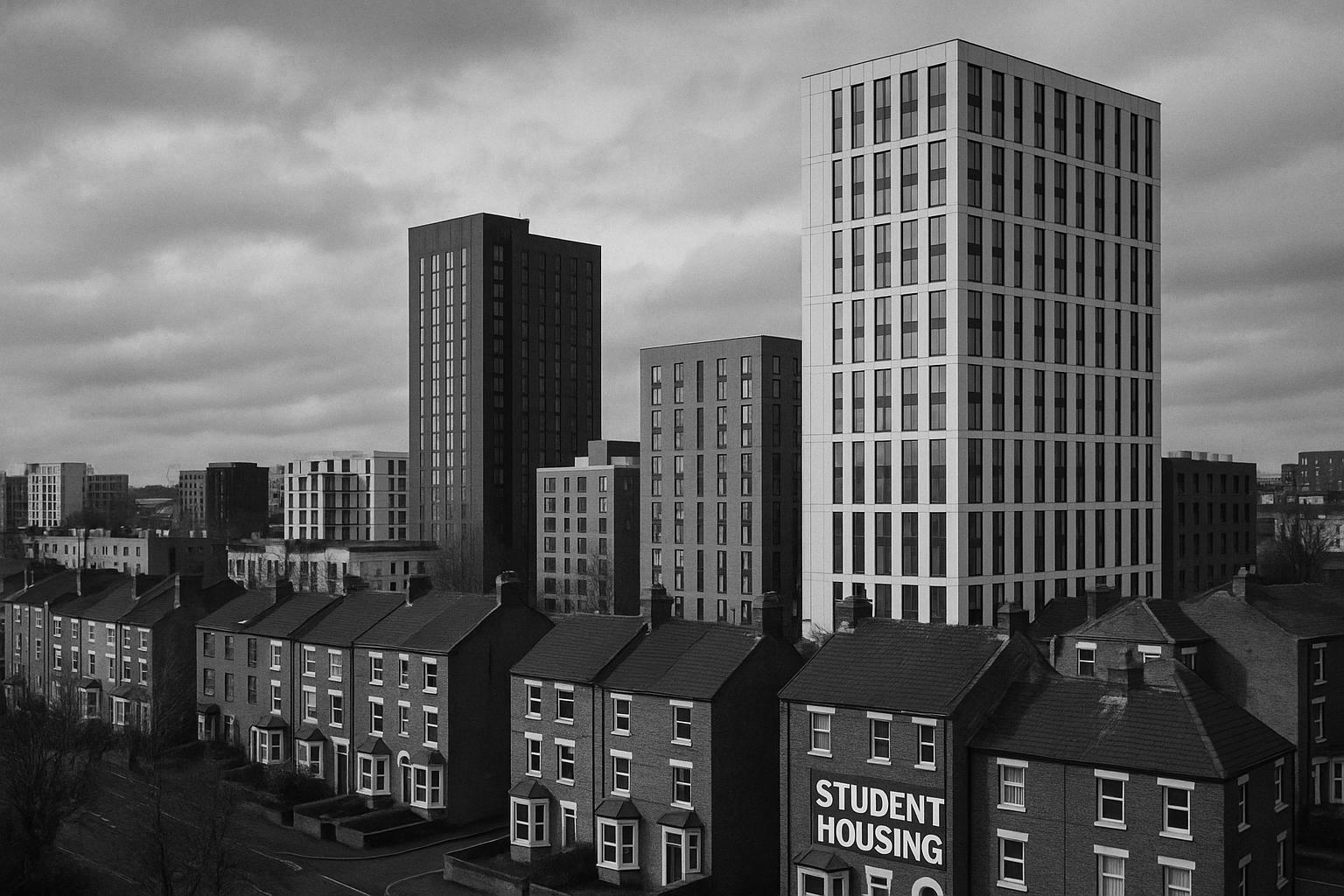The UK student accommodation sector is undergoing a fundamental structural shift, with Purpose-Built Student Accommodation (PBSA) facing notable declines in booking rates alongside marked regional disparities. StuRents' recent summit in London revealed that PBSA studio bookings fell significantly from 58% to 44.2% year-on-year, signalling a cooling in market demand. While overall fundamentals remain stable in key markets, the sector is polarising between outperforming and underperforming assets, suggesting that location and strategic positioning have become more critical than ever.
The data highlights stark contrasts across cities, with the leading market achieving 51% booking rates, whereas the least performing city dipped to just 29%. Nottingham serves as a prime example of an oversupplied market, with bookings dropping from 96% to 87% by late 2024 and signs of rent decline as supply outpaces demand. Conversely, Leicester's strong market fundamentals demonstrate that targeted locations can maintain steady demand growth and stable leasing velocity, underscoring the importance of market selectivity for investors.
Another noteworthy development is the growing competition between PBSA and Build to Rent (BTR) schemes, which are increasingly appealing to students. Many students no longer differentiate strictly between PBSA and BTR accommodation but seek flexibility, value-for-money, and enhanced services. Features such as shorter tenancy options, pet-friendly policies, couple accommodation, in-room washer/dryers, and independent living have made BTR developments more attractive, especially for international students. This shift is pushing PBSA operators to innovate their service offerings and rethink their positioning in this evolving landscape. At the same time, BTR providers benefit by managing their exposure to student tenants, who are not their primary target, offering some diversification advantages to the overall market.
The Houses in Multiple Occupation (HMO) sector illustrates particularly robust market dynamics, growing over 5% in rental values as it has absorbed much of the expanding domestic student population. Approximately 77% of British students now choose HMO accommodation over PBSA, driven in part by affordability and supply constraints within the PBSA sector. Since 2016, the addition of 160,000 UK undergraduates has sustained demand in the HMO market, coupled with long-term demographic trends supporting growth. However, upcoming regulatory changes, such as the Renters’ Rights Bill, may alter traditional letting patterns in the HMO sector—especially for two-bedroom properties—potentially compressing supply and driving rent increases. This could create windows of opportunity for PBSA providers to capture more domestic demand, particularly displaced early in the letting cycle.
Rental growth trends remain generally positive but uneven. Recent years have seen rental prices for PBSA rise significantly beyond historical averages, with some cities experiencing rapid increases—for example, Glasgow recorded over 20% growth while Coventry saw more moderate rises. The HMO sector reported strong rental escalation as well, around 13.1% year-on-year, with expectations for continued upward pressure. Nevertheless, rising rents outstripping student maintenance loan growth pose concerns regarding affordability and access to higher education, especially for domestic students reliant on budget accommodation.
Supply dynamics further complicate the picture. The delivery of new PBSA beds has slowed sharply, with around 12,000 new beds expected in 2023, down from a peak of 36,000 in 2019, signalling a deliberate slowdown and pause for market recalibration. Planning applications are rebounding, suggesting future attempts to balance supply with demand. Meanwhile, BTR developments continue to repurpose some of their schemes for student housing, expanding supply channels and intensifying competition for tenants. This multifaceted supply environment means operators and investors must rely heavily on precise, high-quality market intelligence.
StuRents emphasised the growing importance of sophisticated data analysis, illustrating how different methodologies can yield vastly contrasting supply-demand assessments even within the same city. For instance, Nottingham’s seemingly high undersupply ratio was countered by a more nuanced methodology showing supply outstripping demand. Access to independent, real-time data combined with human oversight and advanced analytical tools is becoming a decisive competitive advantage. This intelligence supports more informed pricing strategies, investment decisions, and tenant targeting across a polarising and complex market.
Despite these headwinds and structural changes, optimism persists among leading industry figures. The pent-up demand of recent years has tempered, necessitating recalibration and more focused efforts in leasing strategies. As Sky Mapson of Maslow Capital noted, investors have become more selective, concentrating on specific cities and micro-locations where strong fundamentals prevail. PBSA’s share of investment portfolios is growing, reflecting confidence in the sector’s long-term potential, particularly with robust international student demand continuing to underpin market resilience in well-positioned locations.
In summary, the UK student accommodation sector in 2025 is marked by a strategic recalibration amid shifting demand patterns, evolving competition from BTR, rising rental pressures, and regulatory uncertainties. Success in this environment will depend on targeted market selection, innovation in product and service offerings, and superior data-driven insight to navigate the diverse and changing landscape.
📌 Reference Map:
- Paragraph 1 – [1], [4]
- Paragraph 2 – [1]
- Paragraph 3 – [1], [5]
- Paragraph 4 – [1], [3]
- Paragraph 5 – [1], [2], [4]
- Paragraph 6 – [1], [5], [6]
- Paragraph 7 – [1]
- Paragraph 8 – [1], [7]
Source: Noah Wire Services
